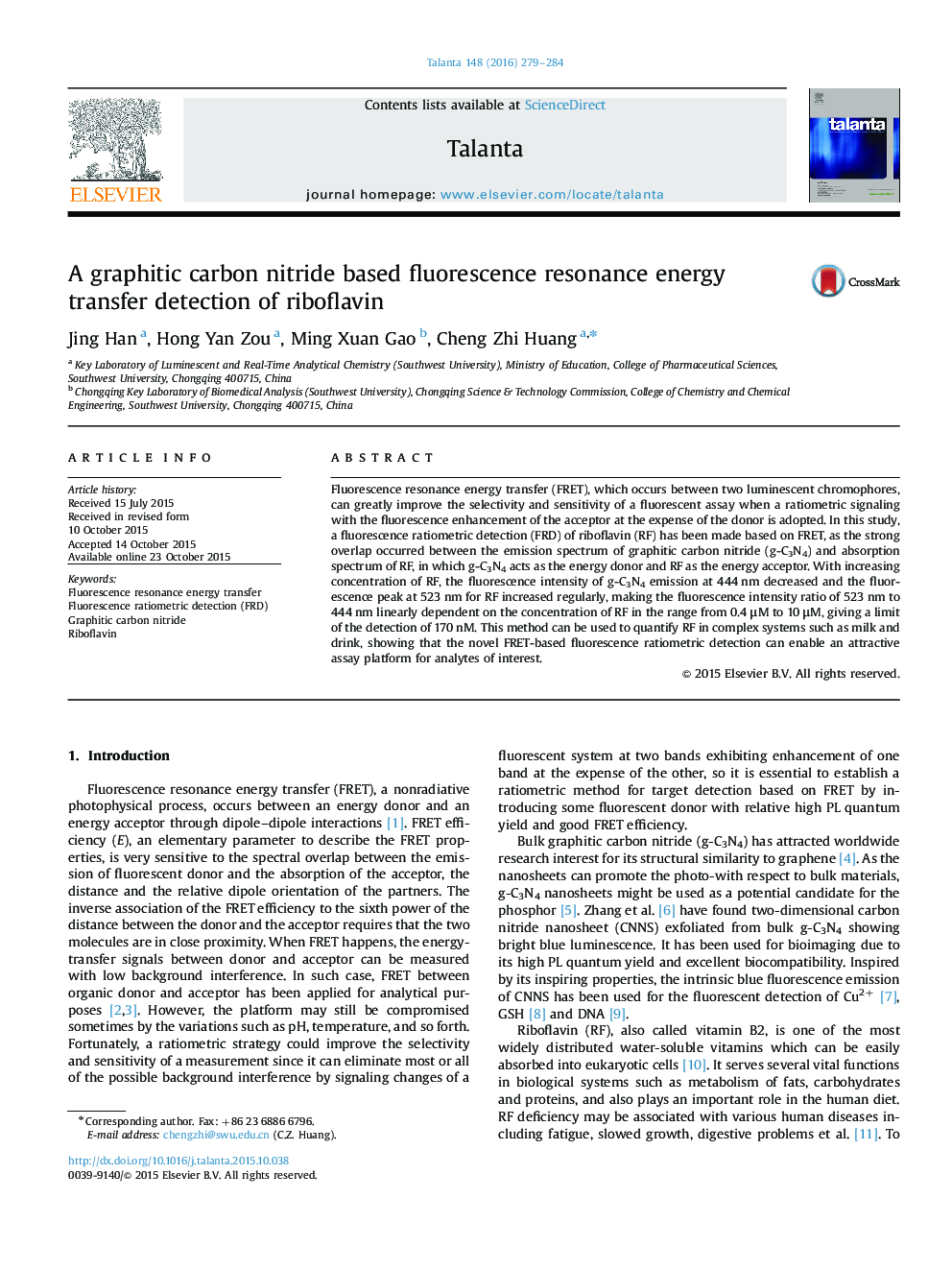| Article ID | Journal | Published Year | Pages | File Type |
|---|---|---|---|---|
| 1243785 | Talanta | 2016 | 6 Pages |
•A new strategy for riboflavin (RF) determination based on fluorescence resonance energy transfer (FRET) was developed.•In this system, graphitic carbon nitride (g-C3N4) nanosheets were employed as the donor and RF acted as the energy acceptor.•This system can be used to quantify RF in complex systems such as milk and drink sensitively.•The novel principle of FRET based on ratiometric sensing strategy can enable an attractive assay system platform for quantifying other analytes of interest.
Fluorescence resonance energy transfer (FRET), which occurs between two luminescent chromophores, can greatly improve the selectivity and sensitivity of a fluorescent assay when a ratiometric signaling with the fluorescence enhancement of the acceptor at the expense of the donor is adopted. In this study, a fluorescence ratiometric detection (FRD) of riboflavin (RF) has been made based on FRET, as the strong overlap occurred between the emission spectrum of graphitic carbon nitride (g-C3N4) and absorption spectrum of RF, in which g-C3N4 acts as the energy donor and RF as the energy acceptor. With increasing concentration of RF, the fluorescence intensity of g-C3N4 emission at 444 nm decreased and the fluorescence peak at 523 nm for RF increased regularly, making the fluorescence intensity ratio of 523 nm to 444 nm linearly dependent on the concentration of RF in the range from 0.4 μM to 10 μM, giving a limit of the detection of 170 nM. This method can be used to quantify RF in complex systems such as milk and drink, showing that the novel FRET-based fluorescence ratiometric detection can enable an attractive assay platform for analytes of interest.
Graphical abstractThis study developed an innovative fluorescence ratiometric detection (FRD) of riboflavin (RF) based on fluorescence resonance energy transfer (FRET), in which graphitic carbon nitride (g-C3N4) nanosheet acts as the energy donor and RF as the energy acceptor.Figure optionsDownload full-size imageDownload as PowerPoint slide
